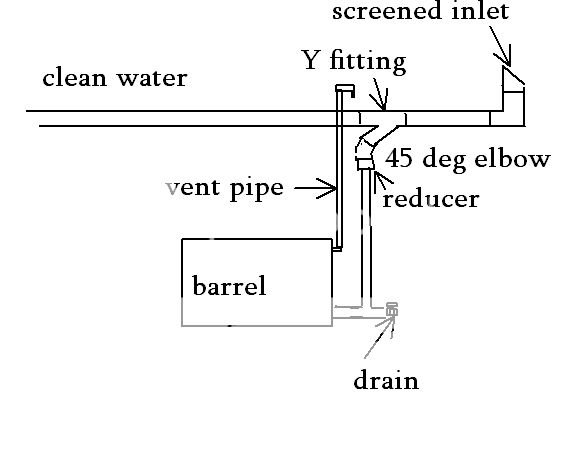posted 10 years ago
I live on catchment water, although I also have access to county water if I'm willing to truck it in myself or pay a water hauler to deliver.
I don't use a first flush diverter although I would always recommend it for anyone who asked me about catchment systems. Why don't I use one? The vast majority of my rain comes via drizzle and light rain. Thus the roof surface doesn't get washed off adequately in most of my rains. Even with a several hour light rain, I can still see ash, grit, the occasional bird feather, tree leaves sitting on the roof. So my water coming off the roof is "dirty" even at after the first 20-50 gallons collected. In fact, after a ten hour light rain, the roof appears almost as dirty as when it started.
People here living in really dry areas don't use first flush diverter either because every drop of water is precious. Our county periodically gives a free instructional class about catchment, and even they know not to waste time teaching about how to make and use first flush diverter to the Oceanview and Green Sands residents.
Just about everybody here screens the water entering their catchment tank. Usually some device at the end of the pipe -- a colander, a screen box, a woman's nylon tied onto the end of the pipe, or something to catch the chunks. No fine filters at this stage.
If using a pump to move the water from the tank, then a filter is needed in order to protect the pump. Another thing to do is to either situate the water outlet pipe 6 inches above the bottom of the tank or have a flexible hose with a float (such as an old 2 liter soda bottle) that keeps the intake about 4-6 inches beneath the water surface. The idea is not to suck up the fine debris that has settled to the bottom of the tank. Sucking that silt up will clog your filter in a hurry.
If you're just using trashcans/barrels or a small tank for short term storage and using it for irrigation, then not much else needs to be done to the water. But if the catchment tank is large and the water stored for long periods of time, then the water needs to be treated. I monthly check my water pH and chlorine level and adjust as needed. I routinely store over 30,000 gallons of water.
Covering the water to block light will deter algae growth. On longterm stored water, mosquito control is important. So that is something that needs to be addressed.
I use my catchment water for everything but drinking and cooking. I use county water that I bring in by the gallon because it is convenient and free. I pass the county water spigots six days a week, so it's no problem for me. But if I were to use my own catchment water for drinking, then I would need to sanitize it is some fashion. The maintenance bleach would not be enough. Most people here opt to use a UV light system. And before the water reaches the UV light, they install a fine particulate filter. There are other ways to sanitize water, but this is the common method here.
As for drinking water stored in plastic, I'm not too fond of that idea for myself. I store my drinking water in glass containers.
It's never too late to start! I retired to homestead on the slopes of Mauna Loa, an active volcano. I relate snippets of my endeavor on my blog : www.kaufarmer.blogspot.com

























 1
1









 1
1

































